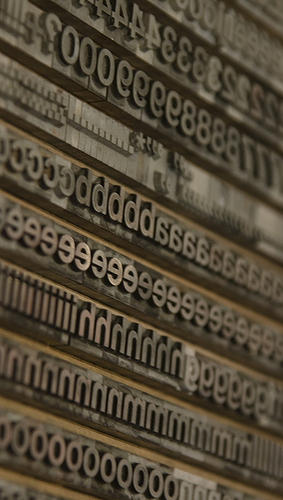Stream I-O: CS 310 Lecture notes
Outline
I-O varieties.
Binary Stream I-O.
Text Readers and Writers.
Linking Text and Binary I-O.
I-O Streams
Data are abstracted as byte sequences with various properties.
External data storage is also abstracted as byte sequences with
various properties.
Data moves into and out of programs through I-O streams
A stream of bits from (I) or to (O) external data storage.
Three I-O Properties
Three helpful I-O properties are
Binary vs. formatted (machine vs. humans).
Unstructured vs. structured (bit streams vs. records).
Uninterpreted vs. interpreted (formatting).
The properties are not independent.
Interpretation usually requires structure.
Binary vs. Formatted I-O
Ultimately, all I-O is in bits (or bytes).
Binary I-O
And unstructured beyond byte sequences.
Formatted I-O
“Formatted” implies a textual structure.
Record I-O implies different structures and interpretations.
Abstract Input and Output
InputStreamOutputStream
Prefer the most abstract representation of a stream class.
Output Streams
void close()flush()
Make sure output clears the stream.
abstract void write(int b)
Write the rightmost (least significant) byte.
void write(byte [] b)
void write(byte [] b, int off, int len)
Input Streams
int available()
A guess at the available byte count.
void close()
Skip (read and toss) bytes; return the count of bytes skipped.
Reading Input Streams
abstract int read()
Return the next byte read or -1 if there won’t be any more.
Blocks if no bytes are available but more may come.
int read(byte [] b)
int read(byte [] b, int off, int len)
Returns the number of bytes read or -1.
Marking Input Streams
Less Abstract I-O Streams
From where to the bytes come? And to where do they go?
Concrete classes associated with byte sources and sinks.
Some byte sources and sinks have capabilities in advance of those
provided by Input- and OutputStreams.
Input-Stream Classes
ByteArrayInputStream
ByteArrayInputStream(byte [] buff)
FileInputStream
FileInputStream(File file)
FileInputStream(String name)
AudioInputStream
AudioInputStream(InputStream is,
AudioFormat fmt, long len)
Output-Stream Classes
ByteArrayOutputStream
ByteArrayOutputStream()
FileOutputStream
FileOutputStream(File file)
FileOutputStream(
File file, boolean append)
FileOutputStream(String name)
FileOutputStream(
String name, boolean append)
Stream Capabilities
Some stream sources and sinks have special capabilities.
Disk files have efficient random access.
Network connections have piecemeal transmission.
Some streams contents have special capabilities.
It may be encrypted or compressed.
Filter streams deal with stream capabilities.
Filter Streams
Transport
Transformation
And so on, and so on.
Input Filters
Input-Filter Example
import javax.crypto.CipherInputStreamCipherInputStreamBufferedInputStreamFileInputStreamFileNotFoundExceptionIOExceptionInputStream
Output Filters
I-O Stream Summary
There are three levels to the I-O stream hierarchy:
Abstract input and output streams.
Concrete (usually) source or sink streams.
Filter streams provided capabilities.
Usable I-O streams are composed from source or sink streams and
filters.
All treated as abstract input or output streams.
Data I-O
Doing byte-oriented I-O is necessary, but inconvenient.
How are Java primitive values input and output?
The JVM makes binary I-O for primitive values useful.
Fast, compact, and portable.
The data I-O streams
Data I-O
The primitive types are
boolean, byte, short, char, int, long,
float, and double.
There are read and write routines for each primitive.
writeBoolean(boolean)()writeByte(), …
readBoolean()readByte()
See the DataInputDataOutput
Data I-O streams
DataInputStreamDataOutputStream
These are filter streams.
final DataOutputStream outputStream =
new DataOutputStream(
new BufferedOutputStream(
new FileOutputStream(filename)))
outputStream.writeLong(checksum)
Human-Oriented I-O
The stream class deals with bytes as bytes.
Good for machines, bad for humans.
Textual I-O, human oriented I-O, is handled by another set of classes.
Textual I-O is also useful for machine-machine communication.
Abstract Readers and Writers
ReaderWriter
As always, prefer Reader and Writer values where possible.
Writers
The Writer abstract class defines the expected methods:
void close()
void flush()
Make sure output clears the stream.
void write(int c)
void write(char [] b)
void write(string s)
Writer Sinks
Readers
The Reader abstract class defines a handful of the expected methods.
void mark(int n)
void reset()
int read()
int read(char[] cbuf)
abstract int read(
char[] cbuf, int off, int len)
Other classes have to pick up the slack.
Reader Sources
Formatted Translation
PrintWriter translates binary values to a textual representation.
Where’s the reverse translation?
It’s not in the reader hierarchy.
Prior to Java 5, text-to-binary translation was ugly.
Since Java 5, the Scanner class makes it less so.
The Scanner
The Scanner
Constructors and methods include
Scanner(Readable)
double nextDouble()nextLine()
See the Scanner API documentation for details.
Character Sets
Inside Java, characters are 16-bit Unicode code units.
Outside of Java, they aren’t.
And they aren’t in many different ways.
The Charset
static SortedMap availableCharsets()
static Charset forName(String name)
ByteBuffer encode(String str)
CharBuffer decode(ByteBuffer buffer)
Reader-Writer Summary
Reader and Writer hierarchies echo the I-O stream hierarchy.
Readers and writers do character-set translation.
Writers have extensive but simple binary-to-text translation.
Readers rely on other classes for text-to-binary translations.
I-O Exceptions
I-O Exceptions are checked exceptions.
Propagated I-O exceptions must be declared in a throws clause.
Or handled in the method or exception.
Throw the most specific exception possible.
With helpful extra information.
Summary
I-O is a 2×2 matrix: (input,
output)×(binary, formatted).
Each matrix cell has three layers: abstract class, sources and sinks,
and filters.
Assemble usable I-O abstractions by layering filters over sources and
sinks.
For formatted I-O, look to other classes outside the I-O hierarchy.
Particularly for reading.
Credits





